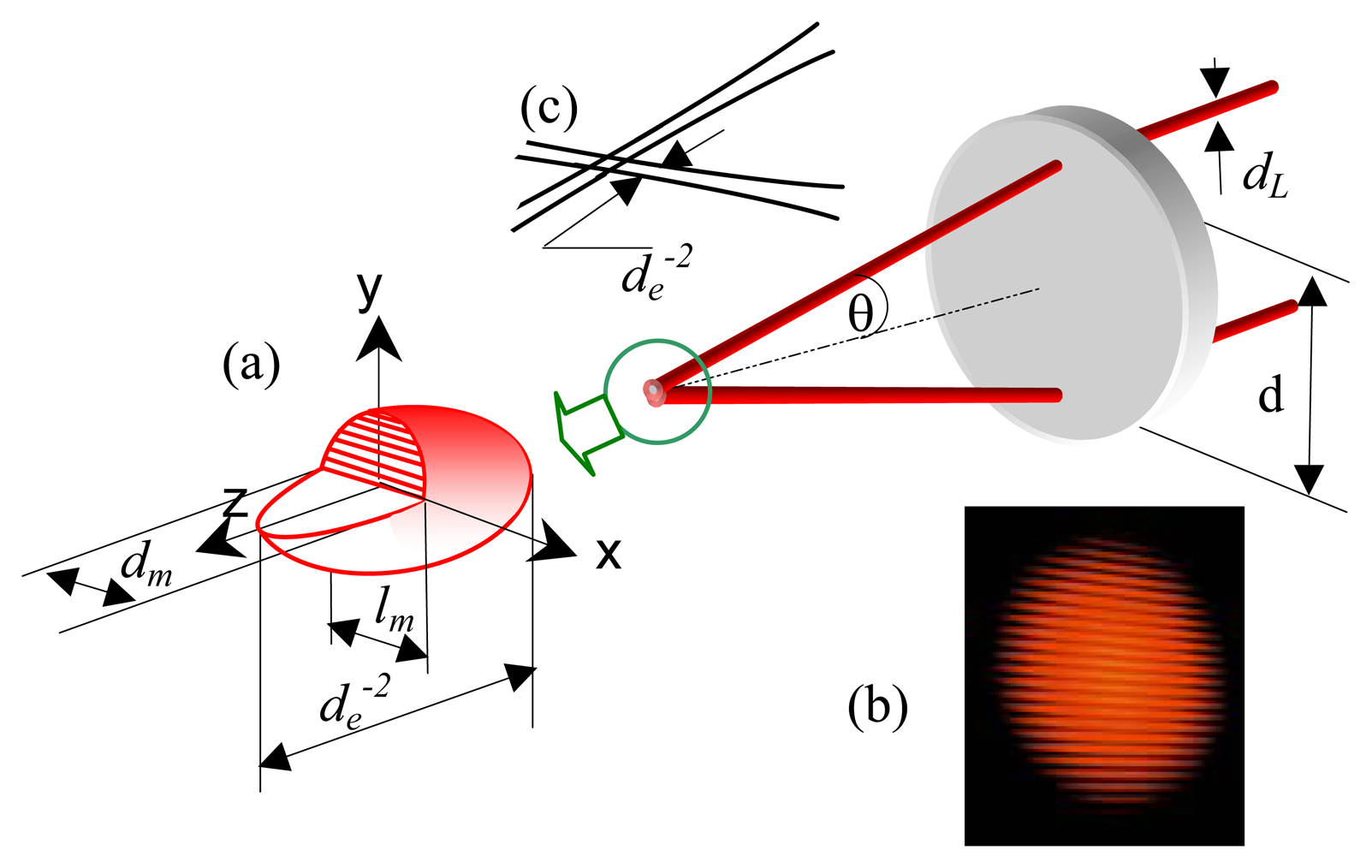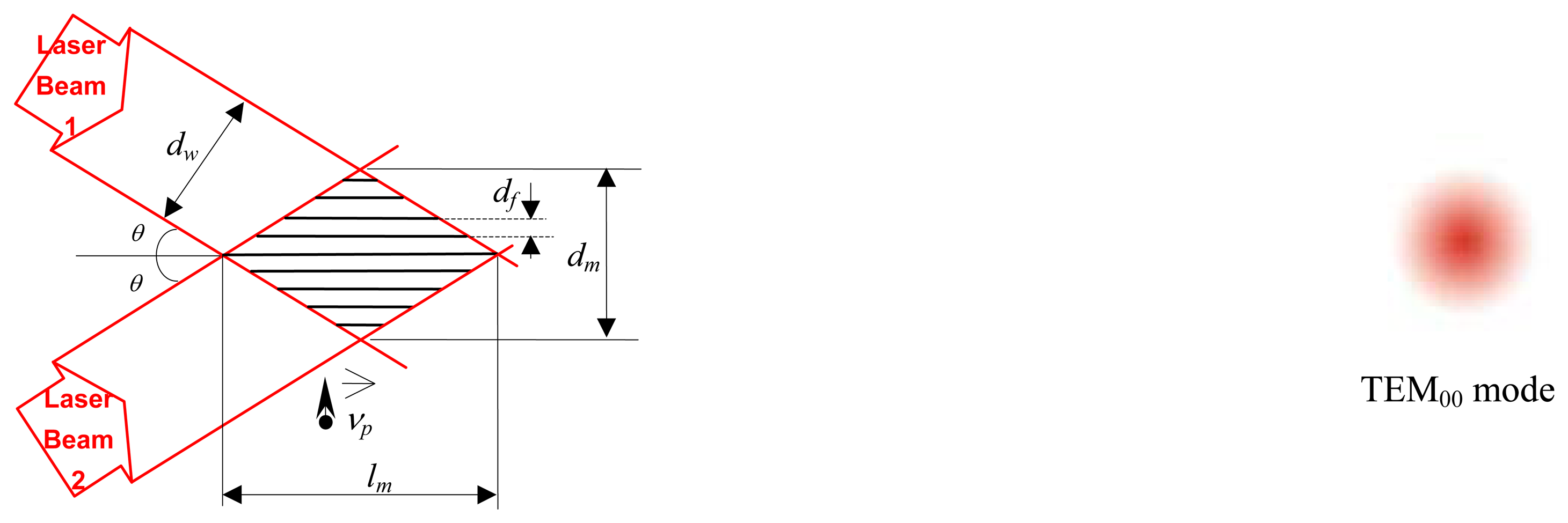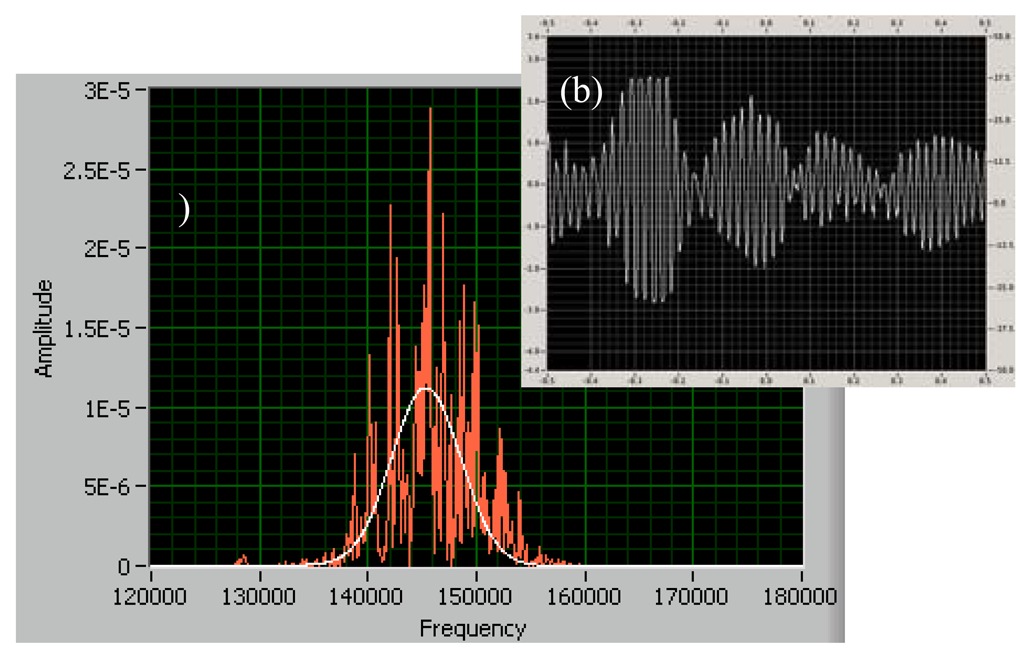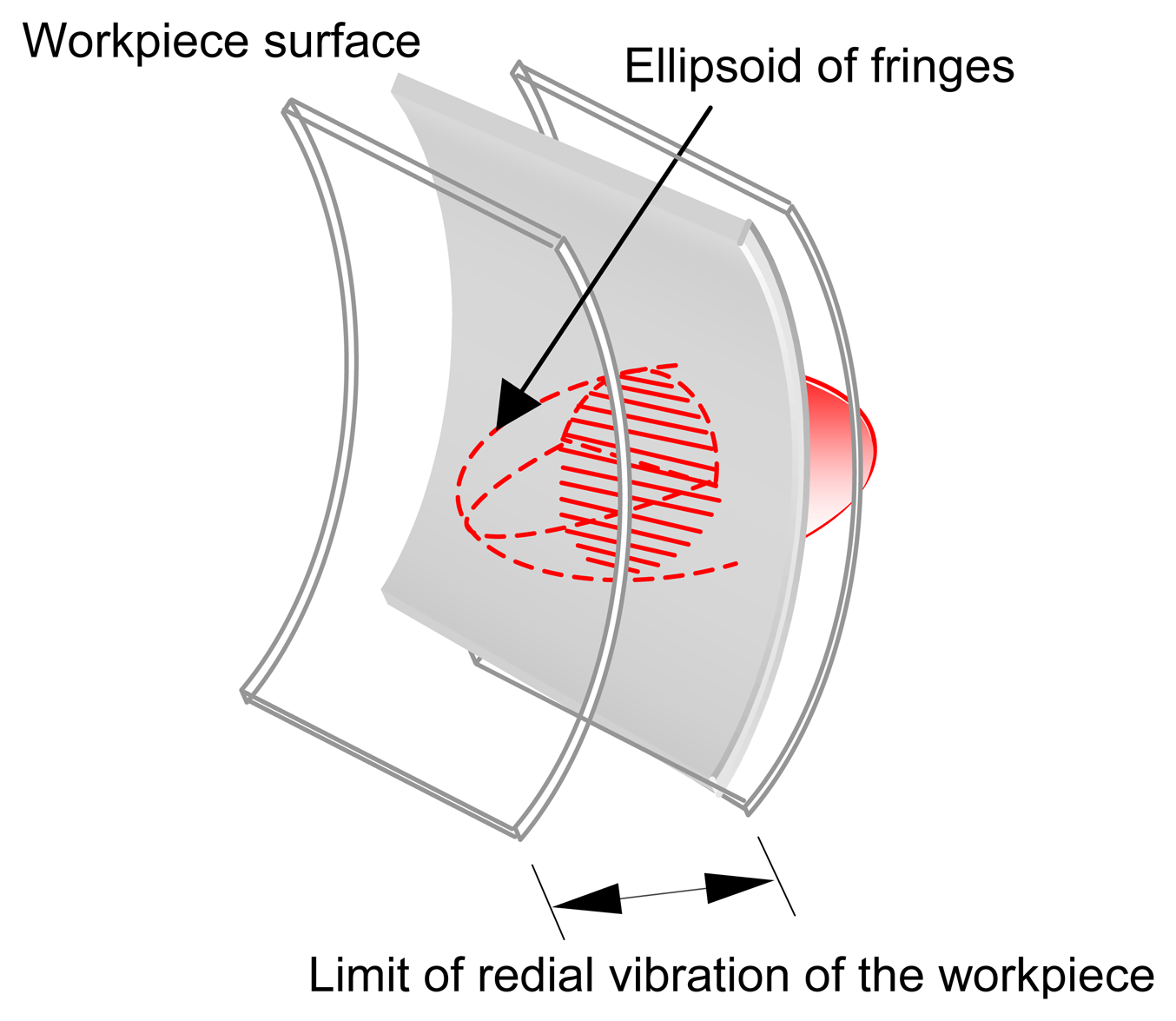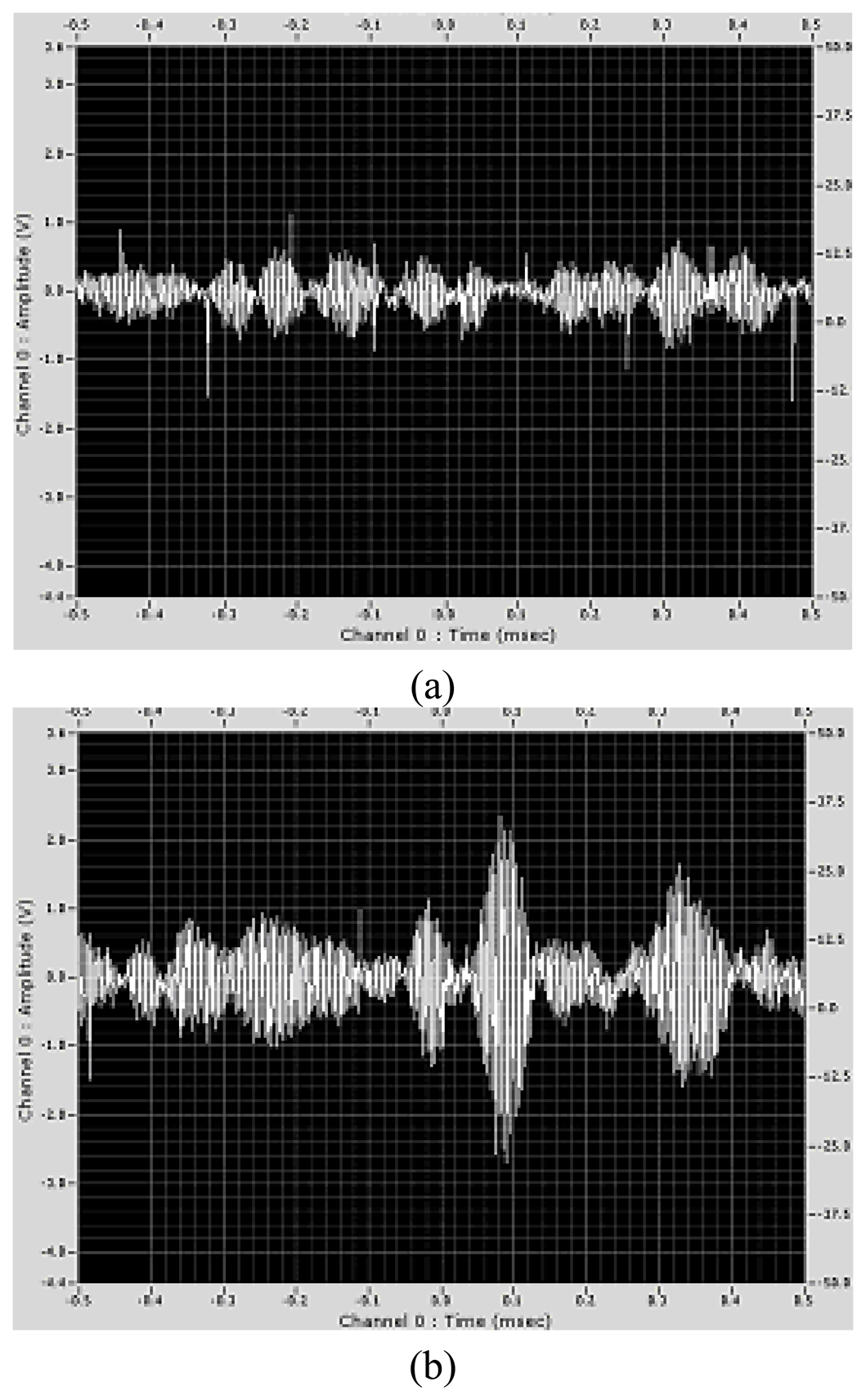1. Introduction
Zero defect parts could only be obtained via full automatic error compensation while they are being machined on the next generation of intelligent machining processes to ensure high quality products at low price and short time. Off-line axis error compensation is successfully achieved with NC machines including thermal growths while on-line compensation still has some difficulties mainly with probes hardware and controllers [
1-
2]. Quality control of the manufactured parts is traditionally performed using manual inspection methods and statistical sampling procedures. It has the disadvantages of releasing some defective parts and using an inspection area. To overcome these problems, in-process inspection with error correction in NC machines is proposed as another alternative. In-process measurement techniques have been proposed over the last two decades to control the quality of a workpiece with some difficulties to be addressed. The trend principle in this type of inspection is to use a measuring probe with a measurement control system and to adjust machining parameters to reach the nominal dimension with the required accuracy. A Full review of the developed in-process methods since 1961 is discussed in Shiraishi [
3], Yandayan and Burdekin [
4], and, Vacharanukul and Mekid [
5]. Optical measurement techniques have the advantage to be fast and contact less.
A variety of optical sensors are applied to measurement in metrology. The most common techniques include triangulation [
6], shearing interference [
7], coherence radar [
8] and laser Doppler techniques [
9]. Laser Doppler Velocimetry has proven to be very accurate and repeatable over years for fluid applications such as anemometry [
10]. Also Laser Doppler system finds applications in length measurement of sheet materials (e.g. paper, textiles and foils) [
11]. Recently, an indirect measurement method for the determination of the surface velocity in vibrating structures based on laser Doppler vibrometry was investigated [
12].
In mass production, the diameter is one of the significant parameters to be inspected. Many measurement techniques have been developed to measure the diameter of a workpiece [
5]. In this paper, an in-process laser Doppler technique is presented to measure a diameter of the moving workpiece. The fundamental method of differential Doppler technique is employed for solid material with an emitting laser kept clean from back lights using polarizer and retarder as well as an optical amplification of the scattered light. The Doppler signal is acquired in real-time and processed for noise reduction and FFT autocorrelation to accurately determine the Doppler frequency and hence the workpiece diameter. It is expected to enhance the accuracy of measurement up to very few micrometers over a range of 100 mm with a very good traceability of measurements as it uses Laser light as core component.
2. Theory
The principle of differential laser Doppler requires two beams to generate a measuring volume. The shape of the measuring volume is an ellipsoid as illustrated in
Figure 1(a). The size of the measuring volume can be calculated by;
where
de−2 is the waist diameter of the focused laser beams after the focusing lens (
Figure 1(c)),
dm and
lm are respectively the transversal size and the longitudinal size of the measuring volume.
de−2 can be approximately expressed as
where
dL is the diameter of the laser beam and
F is the focal length of the focusing lens [
6]. The Doppler signal occurs when particles or a moving surface pass through the ellipsoidal measurement volume.
The light waves of two beams interfere with one another in the crossing region, creating an interference pattern which consists of parallel fringe planes (
Figure 2(a)). The fringe spacing,
df, is given by
Eq.4, where
θ is the angle between a beam and the optical axis and
λ is the laser wavelength.
As the dimension of the measuring volume and the fringe spacing are defined, the number of fringes in the measuring volume
Nf can be given by
Eq.5.
The number of fringes can also be expressed in terms of optic and wavelength parameters in
Eq.6.
Slightly different expressions were proposed in [
13-
14] to estimate the size of the measuring volume and the number of fringes depending on the crossing location of the beams for which the beam energy is calculated. The fringe counting has been checked with the current test-bench (
Figure 1(b)) and it was found that expression shown in
Eq.6 is more accurate compared to those proposed in [
13-
14]. Moreover, the occurrence of fringes depends on the properties of light source. One main property is called ‘the coherence length’. If the optical path difference between two beams is less than the coherence length, fringes will occur. Thus, the coherence length is one constraint for the optical arrangement based on the differential Doppler technique. The coherence length,
ΔLc, is determined by
Eq.7.
where
c is the light speed in vacuum and Δν the spectral linewidth. In this arrangement, a common He-Ne laser is known to be stable and has a line width of approximately 1.5 GHz; as a result, the coherence length is approximately 20 cm according to
Eq.7 and is greater than the current path difference (i.e. 1-2cm). However, the path difference could be cancelled by a simple optical arrangement. The frequency of the scattered light,
fd, induced by a particle crossing the fringes is proportional to the component of the particle velocity,
νp, perpendicular to the fringe planes and inversely proportional to the fringe spacing as in
Eq.8.
The scattered light is collected by a photo detector which generates an electrical signal. The measurement of the object velocity is converted into frequency measurement of the electrical signal with a scale factor. As the frequency measurement can be easily performed in a wide span of frequencies up to 100 MHz, the fluid velocity can therefore be measured from low to high velocities. A particle crossing through the interference region in
Figure 2(a) will develop a clean oscillation with a Gaussian envelope as the laser operates in the TEM
00 mode. This is the Transverse Electromagnetic Modes (TEM) of the laser beam, which is the wave pattern on the output aperture plane. This particular mode (TEM
00) has circular symmetry and a Gaussian profile as shown in
Figure 2(b). The signal becomes weaker as the particles cross away from the center of the interference region.
3. laser probe description
A non-contact, in-process dimensional probe has been developed to measure workpiece diameter based on the differential laser Doppler technique. The basic principle of the arrangement is to generate fringes on the workpiece surface where the circumferential velocity is normal to the fringe pattern and to detect the Doppler signal obtained from the scattered lights. The probe is shown in
Figure 3. A laser beam is split into two beams whose parallelism is secured by a right angle prism. The beams go through the focusing lens and cross at the focal length. The scattered light from the workpiece surface is collected by a lens and a photodetector. However, some reflected lights and the scattered lights from the workpiece surface can return back to the laser head causing a chaos in the emitting laser. Hence a polarizer and a retarder are placed in front of the laser head to block these lights before they reach the laser head. If the laser light passes through a polarizer and a retarder, respectively, the output light will be a circular or elliptical. Lights reflected and scattered from the workpiece surface have possibly other planes of polarization compared to the incident beam. As a result, the reflected lights and the scattered lights should probably be stopped or at least decreased.
The laser light is scattered from the moving surface passing through the fringes. It oscillates with a specific frequency that is related to the velocity of the workpiece. The workpiece diameter can be calculated using the relationship between the circumferential velocity,
V, and the rotation speed,
N, which equation is shown as follow:
where
D is the diameter of the workpiece and
N is the number of revolutions per minute. According to
Eq.7 and
Eq.9, the Doppler frequency relates to the circumferential velocity of the workpiece depending on the angular velocity and the diameter of the workpiece. By revising the Doppler frequency equation, the diameter of a workpiece,
D, is given by
Eq.10.
When a particle in fluid or gas passes through the fringe volume, a burst of Doppler signal occurs. Scattering from a diffusing solid surface can be considered equivalent to a multitude of particles distributed randomly in the measuring volume for flow measurements.
Figure 4 (b) shows a typical signal from a solid workpiece surface with the current probe. The signal includes Doppler signal with noises. These low-frequency noises can be eliminated using a high-pass filter. The acquired signal was processed by fast Fourier transformations (FFT) technique. The spectrum is fitted with a Gaussian distribution to locate neatly the centre frequency (
Figure 4(a)). The standard deviation of the centre frequency (
σfc) is given by
Eq.11.
where
σt is the standard deviation of the Gaussian or the acquisition time. Revising
Eq.11, the relative accuracy (
σfc)/
fd) of the Doppler measurement can be expressed by
Eq.12.
where
ntotal is the number of fringes within the acquisition time. It appears from
equations 11 and
12 that better accuracy can be achieved with the longer acquisition time.
4. Parameters affecting the accuracy of diameter measurement and error propagation
As this is not a direct measurement, the accuracy of the diameter measurement depends on the performance of its components. A unified method for the evaluation and expression of measurement uncertainties is published within the Guide to the expression of Uncertainty in Measurement (GUM) [
15] which is accepted worldwide. The combined standard uncertainty,
uc, as the standard uncertainty of the measurement of
Y, by combining the individual standard uncertainties and co-variance, depending on the case and using the law of propagation of uncertainty:
where ∂
f/∂
xi are the partial derivatives ∂
f/∂
Xi evaluated at
Xi =
xi and
u(
xi ,
xj)are the estimated co-variance associated with
xi and
xj.
Eq.13 is based on a first-order Taylor series approximation of
Where
Y is the measurand determined from
N input quantities
X1,
X2,,…,
XN through a functional relationship
f. An estimate of the measurand Y, represented by
y, is obtained from
Eq.13 using input estimates
x1,
x2,…,
xN for the values of the input quantities. The output estimate which is the results of measurement is then given by
The performance of each component for the in-process laser probe considered in this paper as well as the propagation of uncertainty are discussed hereafter. Other source of errors may be induced by beams misalignment and adjustment.
4.1 Accuracy of He-Ne Laser
A He-Ne laser is recognised to have a narrow variation in wavelength, which generally falls within a range of 10
-12 m. The wavelength stability depends on the linewidth of the laser. The change in the wavelength due to the linewidth, Δλ, can be calculated by:
Where λ is the wavelength of the laser,
c is the light speed in vacuum and Δν is the spectral linewidth of the He-Ne laser (1.5GHz). By substituting λ = 632 nm into
Eq.16, Δλ is approximately 0.002 nm. This variation causes an error in the diameter measurement based on the differential Doppler technique. The error owing to the wavelength variation at 0.002 nm for a 100 mm diameter workpiece at 1000 rpm and at θ = .7.125° is shown in
table 1. Therefore the error in diameter will be approximately 0.3 μm. Thus, the effect of the laser wavelength on the required accuracy of diameter measurement of micrometer is considered acceptable.
4.2 Accuracy of the Doppler frequency
As Gaussian fit is applied to determine the Doppler frequency, the relative accuracy of the Doppler frequency measurement,
σf/
fd is determined by
equations 11 and
12 and is less than 0.01%.
4.3 Accuracy of the beam crossing angle
The angle between a beam and the optical axis is given by
Eq.17.
where
Ros is the axial offset of the beams and
F is the focal length of the transmitting lens. Thus, the angle error depends upon the accuracy of
Ros and
F. The accuracy of is estimated to be 0.1%.
4.4 Accuracy of the number of revolutions per minute
In general the number of revolutions per minute is measured using timers and counters within the motion controller card but usually the value is acquired from the NC machine controller. The accuracy of rotative speed is better than 0.01%.
4.5 Error Propagation
The error propagation has been calculated in this indirect measurement comprising the previous described four parameters with the associated estimated errors. The diameter which is calculated from
Eq.10 can be expressed into a more general form as shown in
Eq.18.
The overall expression of the error propagation of the first order has been derived from
Eq.13 as shown in
Eq.19.
where
,
,
and
are the partial derivatives of D with respect to
fd,
λ,
θ and
N while
δλ,
δfd,
δθ and
δN are the change in
λ,
fd,
θ and
N , respectively. Based on
Eq.13 these changes are denoted for example as
δfd =
u(
fd). All the previous parameters are not correlated except the Doppler frequency;
fd and the rotation speed;
N that are correlated parameters, hence the introduction of
δfdN. The algebraic contribution of this part of the uncertainty is negative.
5. Experimental setup and calibration
During the construction of the probe, a test bench has been built to host a laser source emitting a stable laser beam which is split into two beams. The two beams are aligned at long distance. The beams go then through an acromat lens and are focused on the workpiece surface. The workpiece is rotated with stable, controlled angular speed at the relative accuracy of <0.5%. The scattered light is focused onto the photodiode using a single biconvex lens. An electronic circuit has been developed to amplify the signal and to filter it in high pass mode as the Doppler frequency is workpiece diameter and rotation speed dependant. The signal processing is developed under LabView environment with real time data acquisition. The signal spectrum is calculated by FFT. A Gaussian fit to locate the centre of the spectrum which yields the Doppler frequency.
An auto focus system may be required to keep the measuring ellipsoid volume within the workpiece skin. If the workpiece has larger radial vibrations, measurement could be interrupted as shown in
Figure 5. Usually any radial vibration should be within the ellipsoid length. The probe has been calibrated over the range of measurement against four different reference diameter parts (25, 50, 75 and 100mm.) inspected accurately with a CMM machine. As a result, the factor, which represents the relationship between the Doppler frequency and speed, can be evaluated from the calibration process.
7. Conclusion
An in-process and non-contact dimensional measurement sensor has been presented in this paper. The performance of the differential laser Doppler technique applied to solid material has been demonstrated through various tests and diameter measurements. The overall accuracy depends on the accuracy performance of the probe components. The measurements have shown very good accuracies but it is believed that these could be improved according to the theory. The effects of thermal growth should be taken into account although the probe is usually to be used for predictive action near finishing passes to control the final accuracy.
The differential laser Doppler technique seems to be well suited for non-contact dimensional measurement. With the traceability of measurements, further developments are expected to quantify the errors of form that a workpiece may have such as roundness and eccentricity. The work is also extended to profile determination.
